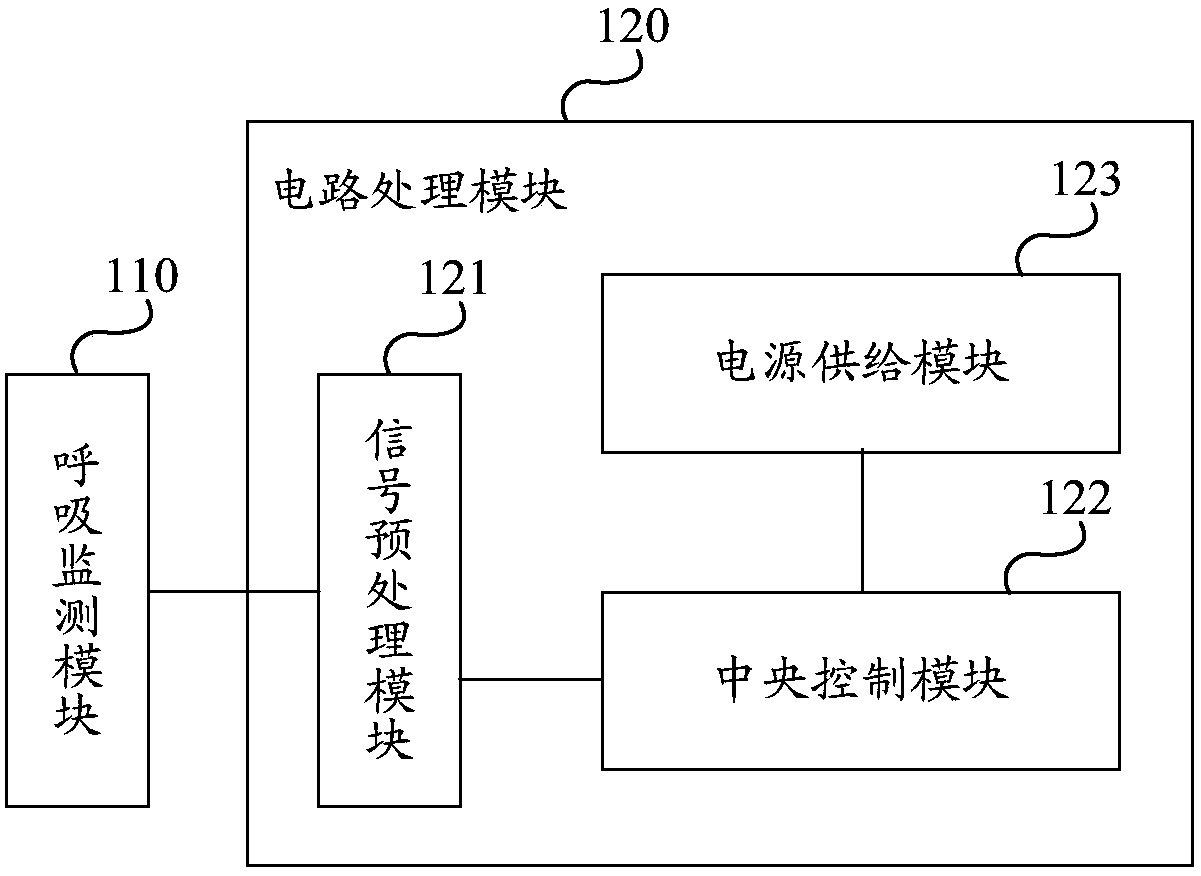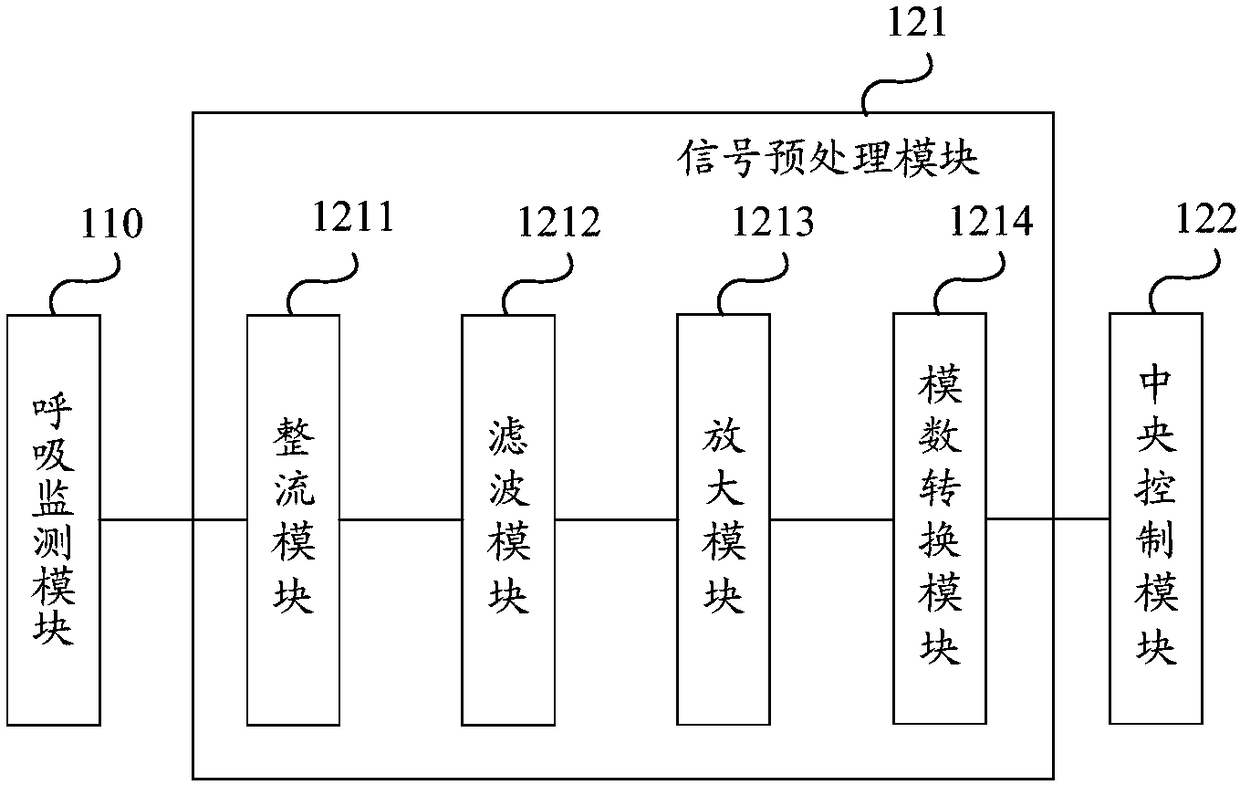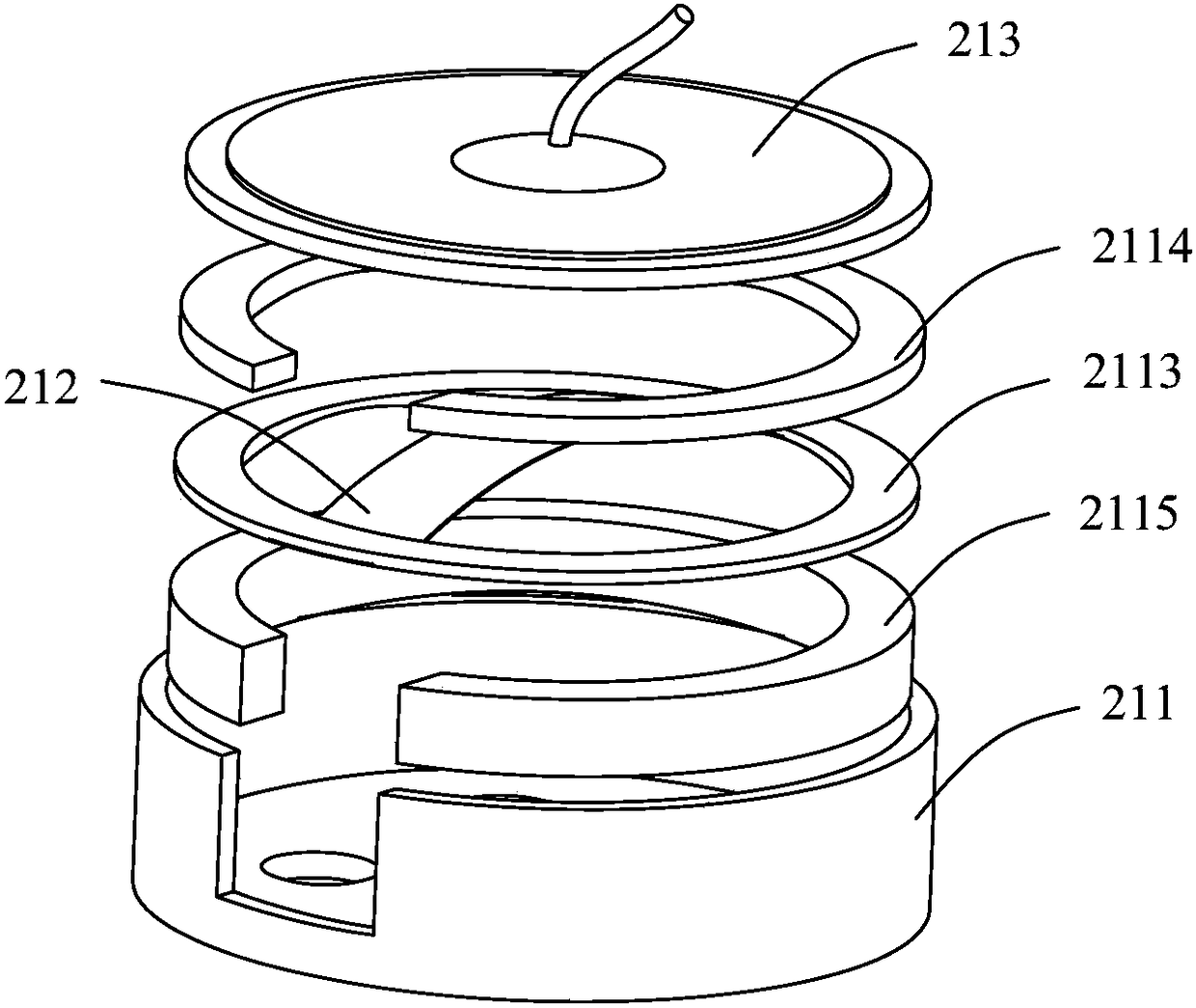A monitoring device and system for breathing frequency, a respirator and an oxygen uptake machine
A breathing frequency and monitoring device technology, applied in the field of sensors, can solve the problem that the equipment cannot monitor the user's breathing frequency sensitively and accurately, and achieve the effect of being suitable for large-scale industrial production, simple in structure and manufacturing process, and high in sensitivity and accuracy
- Summary
- Abstract
- Description
- Claims
- Application Information
AI Technical Summary
Problems solved by technology
Method used
Image
Examples
example 1
[0052] Figure 2a and Figure 2b They are respectively a three-dimensional structural schematic diagram and a cross-sectional structural schematic diagram of the first example of the pneumatic sensor in the first embodiment of the respiratory frequency monitoring device provided by the present invention. Such as Figure 2a and 2b As shown, the pneumatic sensor includes: a housing 211 , a diaphragm assembly 212 and an electrode assembly 213 . Wherein, an accommodating chamber is formed inside the housing 211, an air inlet 2111 is formed on the side wall of the housing 211, and at least one air outlet 2112 is formed on the bottom wall, and the air inlet 2111 and the air outlet 2112 are respectively connected to the housing. The chambers are connected to form an airflow passage, so that the airflow generated by the user’s inhalation or exhalation passes through the airflow passage; the two ends of the diaphragm assembly 212 are fixedly arranged in the accommodating chamber ins...
example 2
[0056] Figure 2c It is a schematic structural diagram of the second example of the pneumatic sensor in the first embodiment of the breathing frequency monitoring device provided by the present invention. Such as Figure 2c As shown, the pneumatic sensor includes: a shielding shell 221 , an insulating layer 222 disposed on part or all of the inner surface of the shielding shell 221 , and at least one sensing unit. Wherein, the shielding shell 221 is provided with at least two air vents 2211, and the airflow generated by the user's inhalation or exhalation passes between the at least two air vents 2211; One air vent 2211, the air flow can enter from one of the air vents 2211 and flow out from the other air vent 2211. The sensing unit includes: at least one fixed layer and one free layer; at least one fixed layer is fixed on the shielding shell 221; the free layer has a fixed part and a friction part; the fixed part of the free layer is connected with at least one fixed layer ...
example 3
[0059] Figure 2d It is a schematic structural diagram of Example 3 of the pneumatic sensor in Example 1 of the respiratory frequency monitoring device provided by the present invention. Such as Figure 2d As shown, the pneumatic sensor includes: a casing 231 , and a first polymer film 233 , a support structure 234 and an electrode 232 sequentially arranged inside the casing 231 . Wherein, the support structure 234 is disposed outside the electrode 232 , and the first polymer film 233 is sheathed outside the electrode 232 and the support structure 234 . Wherein, the casing 231 is a hollow structure, and the electrode 232 and the first polymer film 233 are set inside. The central axes of the shell 231 , the electrode 232 and the first polymer film 233 are located on the same straight line, and the surfaces of the three are separated from each other. In terms of material, the housing 231 can be a metal shell, or a non-metal insulating shell. Structurally, the housing 231 fur...
PUM
 Login to View More
Login to View More Abstract
Description
Claims
Application Information
 Login to View More
Login to View More - R&D
- Intellectual Property
- Life Sciences
- Materials
- Tech Scout
- Unparalleled Data Quality
- Higher Quality Content
- 60% Fewer Hallucinations
Browse by: Latest US Patents, China's latest patents, Technical Efficacy Thesaurus, Application Domain, Technology Topic, Popular Technical Reports.
© 2025 PatSnap. All rights reserved.Legal|Privacy policy|Modern Slavery Act Transparency Statement|Sitemap|About US| Contact US: help@patsnap.com



